The Strategy Funnel
By Sam Holloway, Ph.D., January 10, 2017
How do you “Make Strategy”? Firms use the word “strategy” all the time, but they often don’t know a good process for developing new strategies. Sometimes making strategy is about doing more of what is working. Sometimes making strategy is abandoning something that you have always done, but is no longer a source of competitive advantage. Sometimes making strategy is copying what a rival firm is doing, because they will certainly copy your existing strategies if they are working.
Over the last ten years, we’ve developed a decision making process that allows for making good strategy. I find that writing things down in tables helps my clients visualize all that is possible, and then we set about eliminating those things that aren’t core to a competitive advantage. Think of this strategy funnel as an 80/20 rule. The funnel won’t affect the 80% of what you currently do that is working well. The funnel helps you decide on innovations or changes you may want to make (likely not more than 20% of overall operations). Perhaps you’ve seen a competitor do something you found interesting and you have to decide if you can do it yourself? Maybe you want to introduce a new package, a barrel-aging program, or start making cider or whiskey… These situations, when you are innovating at the margin of what your firm is capable of, are where the Strategy Funnel really helps.
Below is a picture of CAS’ Strategy Funnel. It is a high level road map for you to see how we get from all that is possible and sensible to what we are actually going to do. We follow with an example of how the funnel describes a recent strategic partnership between Odell Brewing Company and Stem Ciders.
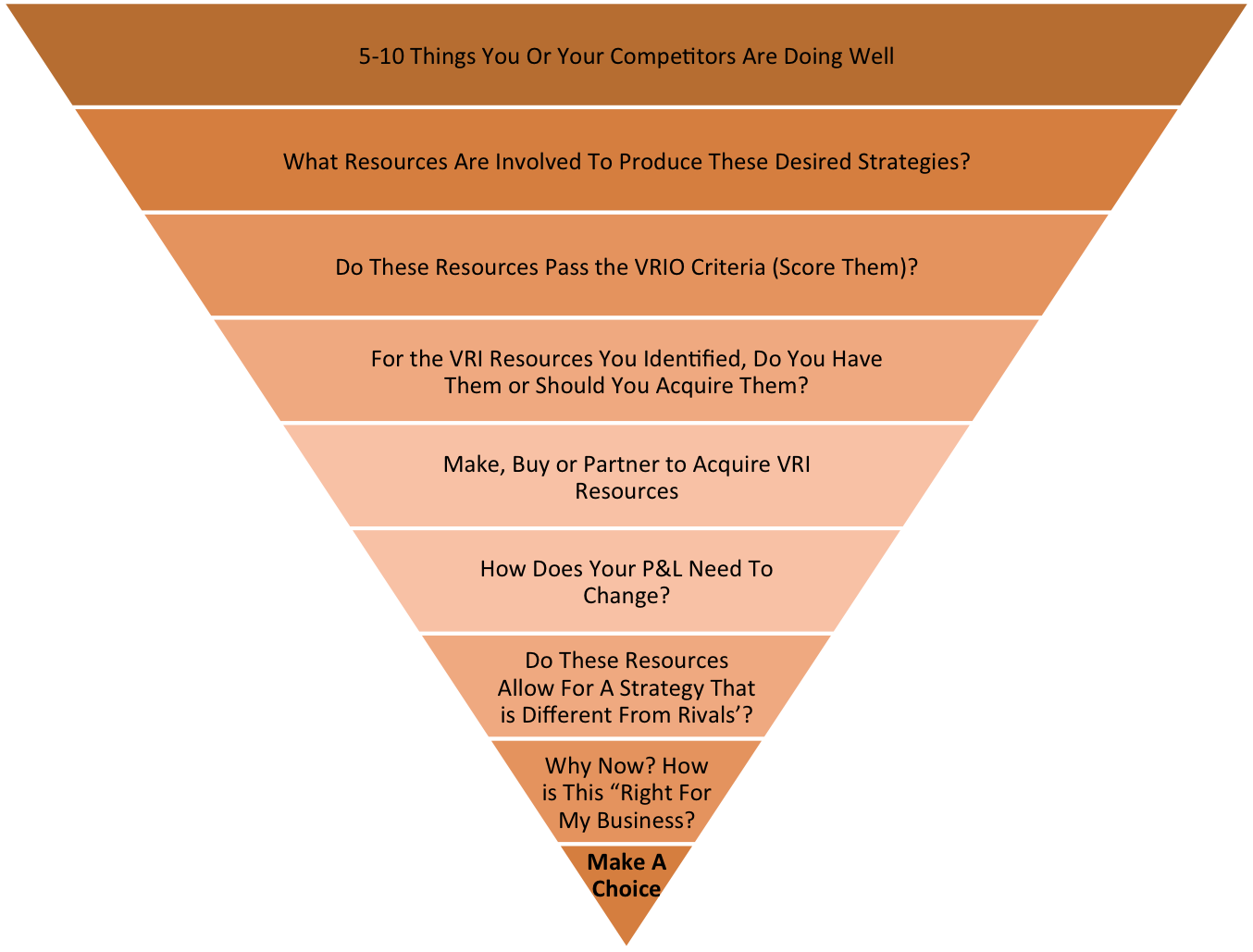
A Recent Strategic Partnership That Fits The Strategy Funnel:
Odell Brewing Co. and Stem Ciders
On September 1, 2016 Brewbound reported an innovative partnership between Denver’s Stem Ciders and Odell Brewing. This type of strategic partnership fits our Strategy Funnel perfectly. Disclaimer: I have no inside knowledge of this deal nor have we talked to either party. I just read the article and was super impressed with their process. Let’s walk through the Strategy Funnel and apply it to this example. In this example, you are the (hypothetical) strategy makers at Denver’s Stem Ciders. Note: Funnel Image Distorted To Fit Copy.
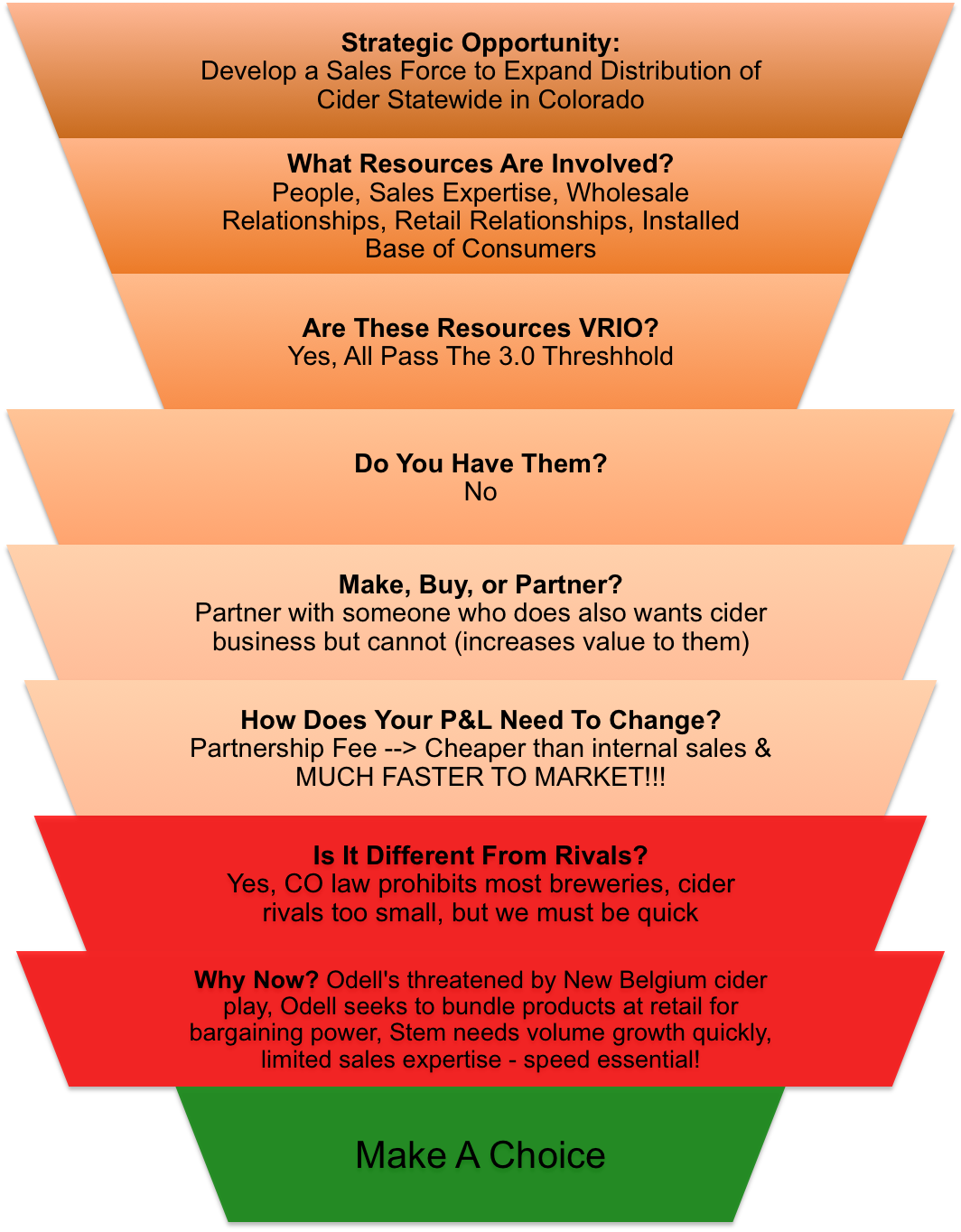
Putting the Strategy Funnel Into Practice
When I work on the strategy funnel with clients, we use a series of tables to capture our ideas. These tables are below and the columns in the tables represent the different layers of the Strategy Funnel. Below each table are CAS white papers and blogs that review the core decision making concepts that inform that column of the table. If you don’t remember the concept, click around and review, then go back to the tables.I encourage you to download these tables and fill them out, methodically. You probably shouldn’t start Table 1 with more than ten potential strategies. As you progress through Table 1, only 2-3 of your ideas are likely to meet the VRIO criteria, so the others won’t make it into Table 2.
Table 1: Understanding where your brewery currently stands
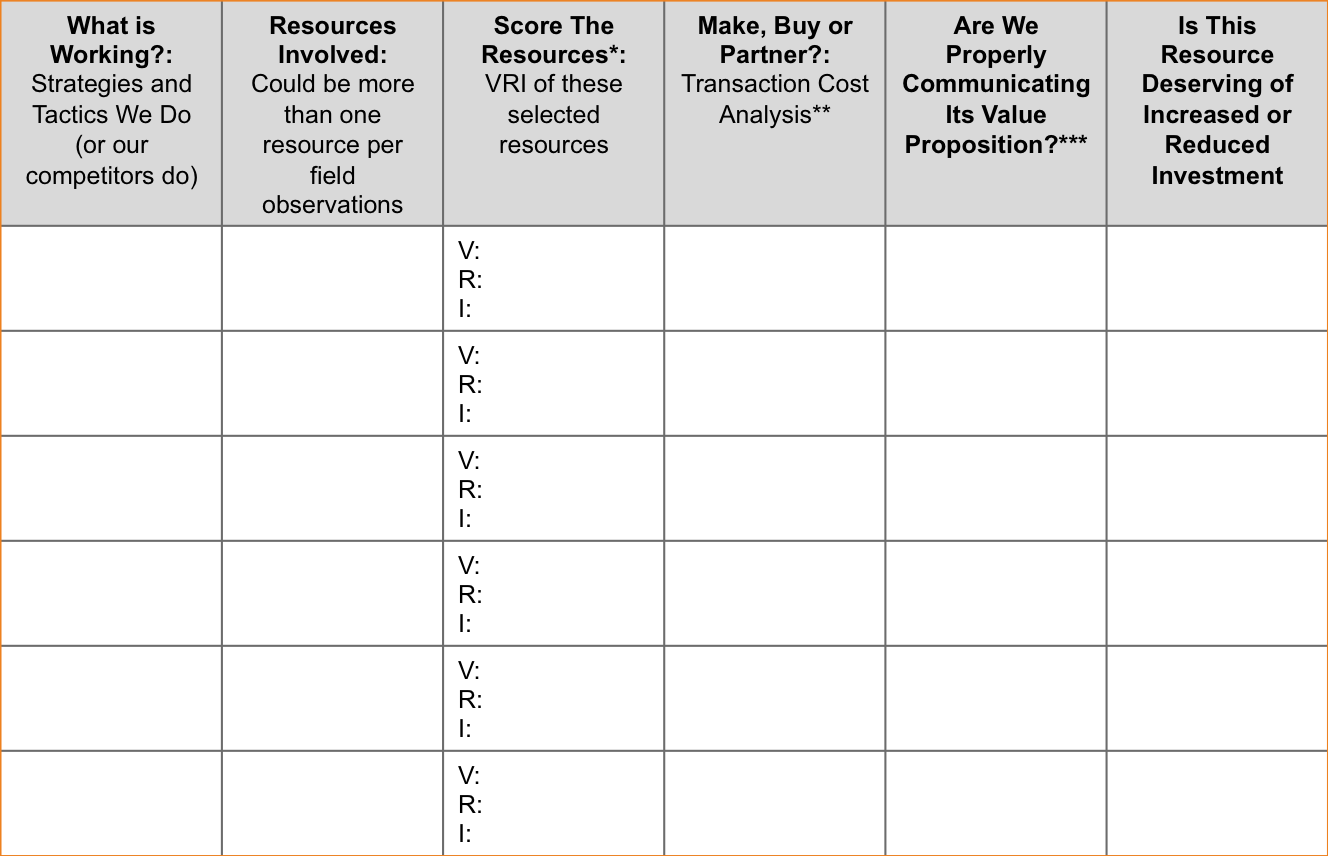 *Click here for scoring criteria for value, rarity, and imitability
*Click here for scoring criteria for value, rarity, and imitability
**Click here for Transaction Cost Economics white paper
***Click here for how to leverage all three sources of buyer behavior
Note: You will need to insert more rows based on the number of resources you deems strategically valuable. Ultimately, you should select 2-3 "observations/rows" from the table above and use those to inform a strategy. Your strategy building begins on Table 2.
Table 2: Of the current activities that may meet the VRIO, what do we current spend on them? Is it enough? Too Much? Not the right expenses?
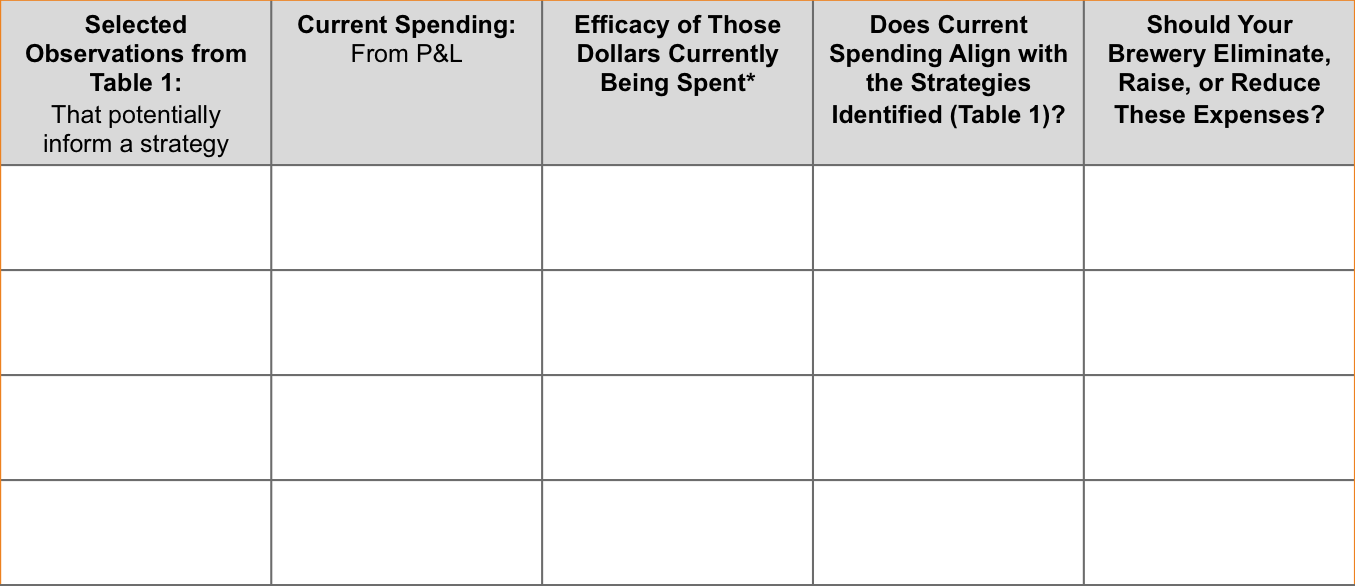 *This is a judgment call on your part. Evidence of efficacy can be social media comments, awards won, new products, etc.
*This is a judgment call on your part. Evidence of efficacy can be social media comments, awards won, new products, etc.
Table 3: Is what we are doing fundamentally different than rivals? Does it fit our mission and beliefs? Are the needed resources and strategies in place, properly funded, and properly organized? If not, what resources (partnerships, investment, new products, new packages) need to be acquired to do what is right?
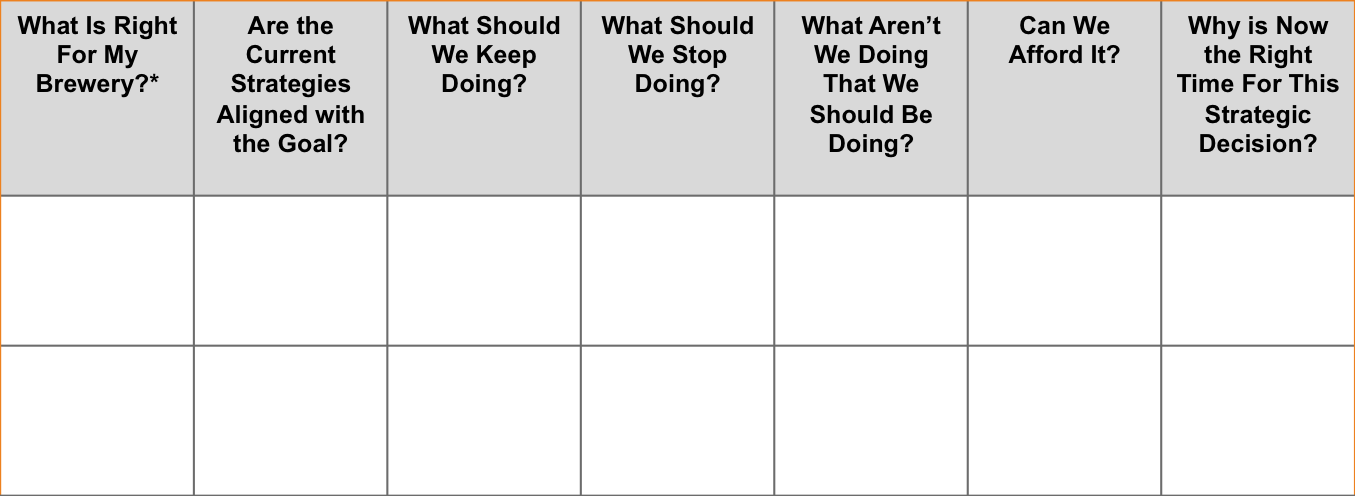 *Strategy is about winning, but you get to decide what winning means
*Strategy is about winning, but you get to decide what winning means

